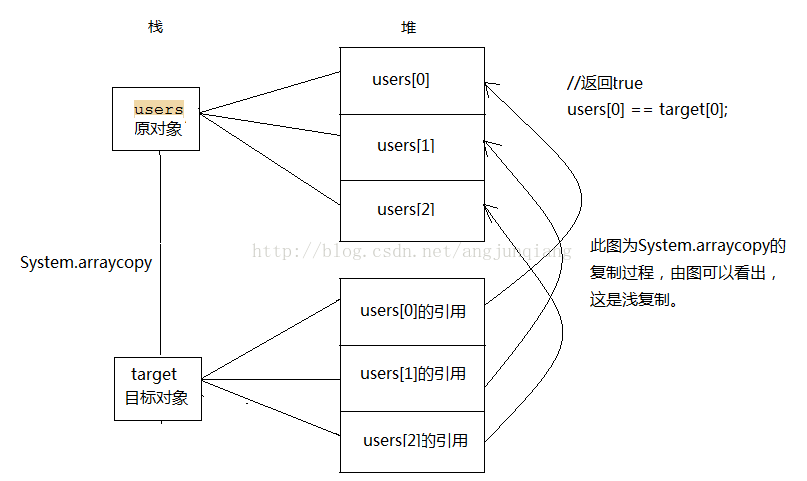StringBuffer是可变的还是不可变的?
前言:我们知道String类的修饰符是final,其char[] value也是由final修饰的,每次给String变量赋一个新值,都会创建一个新的String对象,很多有涉及到字符串本身的改变都是伴有(new String)的字样,所以我们说String类是不可变类。但StringBuffer类也是由final修饰的呀,为什么它就是可变类了呢?
public final class StringBuffer extends AbstractStringBuilder implements java.io.Serializable, CharSequence {
@Override
public synchronized StringBuffer append(String str)
{
toStringCache = null;
super.append(str);
return this;
}
}
在此处可以看出StringBuffer的append功能是继承其父类AbstractStringBuilder的append方法。
public AbstractStringBuilder append(String str) { if (str == null) return appendNull(); int len = str.length(); ensureCapacityInternal(count + len); str.getChars(0, len, value, count); count += len; return this; }
private void ensureCapacityInternal(int minimumCapacity) { // overflow-conscious code if (minimumCapacity - value.length > 0) expandCapacity(minimumCapacity); }
void expandCapacity(int minimumCapacity) { int newCapacity = value.length * 2 + 2; if (newCapacity - minimumCapacity < 0) newCapacity = minimumCapacity; if (newCapacity < 0) { if (minimumCapacity < 0) // overflow throw new OutOfMemoryError(); newCapacity = Integer.MAX_VALUE; } value = Arrays.copyOf(value, newCapacity); }
此处我们可以知道,在AbstractStringBuilder中append方法的实现,是确定容器"capacity"的大小,便于下面value(在StringBuffer中value是没有final修饰符的)的重新赋值,所以这一步我们可以看作类似“踩点”的行为。接下来才是真正的力量:
public AbstractStringBuilder append(String str) { if (str == null) return appendNull(); int len = str.length(); ensureCapacityInternal(count + len); str.getChars(0, len, value, count); count += len; return this; }
public void getChars(int srcBegin, int srcEnd, char dst[], int dstBegin) { if (srcBegin < 0) { throw new StringIndexOutOfBoundsException(srcBegin); } if (srcEnd > value.length) { throw new StringIndexOutOfBoundsException(srcEnd); } if (srcBegin > srcEnd) { throw new StringIndexOutOfBoundsException(srcEnd - srcBegin); } System.arraycopy(value, srcBegin, dst, dstBegin, srcEnd - srcBegin); }
* @param src the source array. * @param srcPos starting position in the source array. * @param dest the destination array. * @param destPos starting position in the destination data. * @param length the number of array elements to be copied. * @exception IndexOutOfBoundsException if copying would cause * access of data outside array bounds. * @exception ArrayStoreException if an element in the <code>src</code> * array could not be stored into the <code>dest</code> array * because of a type mismatch. * @exception NullPointerException if either <code>src</code> or * <code>dest</code> is <code>null</code>. */ public static native void arraycopy(Object src, int srcPos, Object dest, int destPos, int length);
可以看出真正进行“增长字符串”的操作是由系统方法arraycopy实现的,其中:
value是传入的String str的值,也就是要添加进来的字符串;
srcBegin是指,指定的字符数组dst要在value的哪个位置插入;
dst是将要被插入的字符数组;
dstBegin是字符数组的起始位置;
srcEnd-srcBegin是value的长度。
也就是说,StringBuffer的append的实现其实是System类中的arraycopy方法实现的,有点好奇arraycopy方法是怎么实现的,参考了https://blog.csdn.net/angjunqiang/article/details/42031351的图解,这里的浅复制就是指复制引用值,与其相对应的深复制就是复制对象的内容和值:

所以我们可以知道,StringBuffer为什么是可变类。因为StringBuffer的append方法的底层实现就是创建一个新的目标对象,然后将各个字符引用串接起来,这就是一个新的对象了,本质上就是栈多了一个变量,而堆上面并没有变化(为什么是在栈上呢?因为触发到的arraycopy方法是native的,也就是其生成的变量会放到本地方法栈上面去)。
那为什么我们没有把StringBuffer划分为不可变类呢?它明明在栈中创建了一个新的对象。因为一般的对象和数组都会在堆中进行存储,除非是发生了栈上分配现象。我们相比较String对象的存储,就可以知道,StringBuffer对象在此处并不符合栈上分配的条件( 将线程私有的对象打散分配在栈上,可以在函数调用结束后自行销毁对象,不需要垃圾回收器的介入,有效避免垃圾回收带来的负面影响,栈上分配速度快,提高系统性能),所以我们可以知道,StringBuffer的append方法并不会在堆上创建新的StringBuffer对象且内容是结果字符串,而是在arraycopy方法的帮助下,将各个字符引用连接起来。
结论:StringBuffer是一个可变类。





 浙公网安备 33010602011771号
浙公网安备 33010602011771号